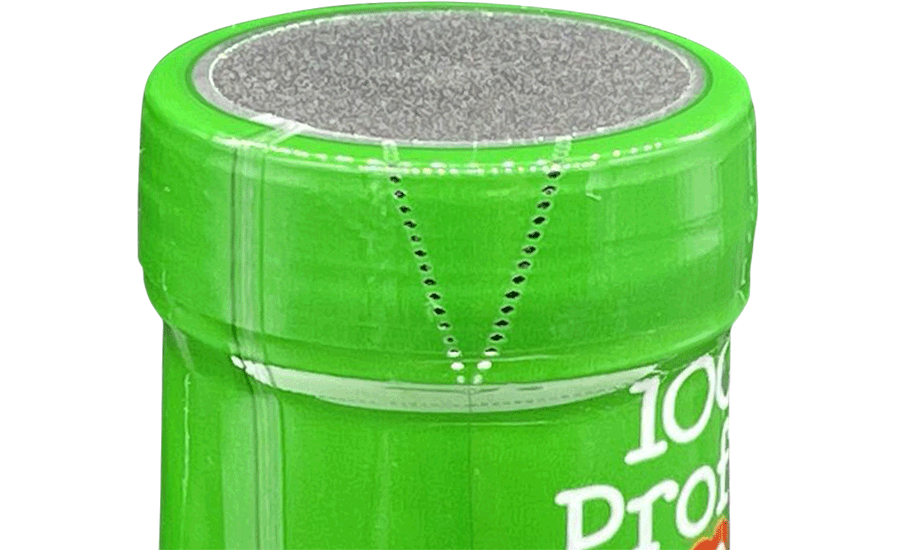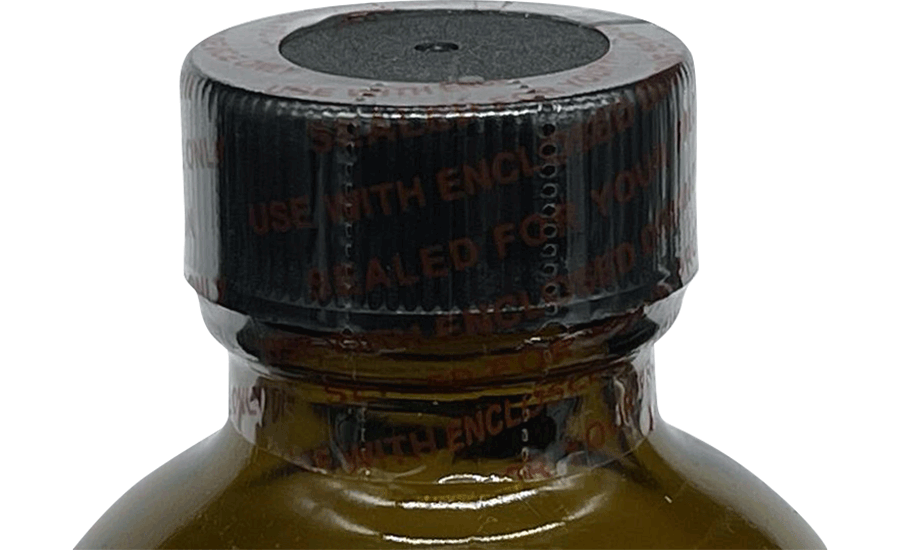Perforations on shrink sleeves perform a number of functions. On neck bands, perforations make it difficult to open or tamper with a product without it being obvious to the consumer. They allow the top portion (tamper-evident band) of a full-body label to be removed from around the cap, leaving the primary graphics remaining on the body of the package. Perforations can also be used to make it easy for the customer to remove the sleeve for recycling purposes.
The primary perforation types are: full vertical, horizontal and partial vertical, and venting.
Full Vertical Perforations
Full vertical perforations are commonly used to easily remove a tamper-evident neck band from around the closure and shoulder of a jar, bottle or tub. This perforation is visibly damaged when the package is opened and is therefore “tamper evident” and a full-body shrink sleeve can be removed from a product for ease of recyclability.

Courtesy of PDC International
Horizontal and Partial Vertical Perforations
Horizontal perforations, often including partial vertical perforations, are used when a full-height shrink sleeve label extends up over the closure to provide tamper evidence. When opening, the consumer removes the portion of the sleeve above the horizontal perforation, exposing the cap or closure which can then be opened. This leaves the label on the body of the package intact.
Venting Perforations
Venting holes or perforations are not part of tamper evidence but are added in the shrink sleeving process to allow air to vent from under a sleeve while shrinking over a concave indentation in a package. This prevents air from being entrapped, allowing the sleeve to conform to the sidewalls of the indented areas. One or two holes per side of the label, spaced apart, are typically enough to let the trapped air escape.
What Is Needed to Make a Neck Band Tamper Evident?
The neck band must underlap and grip an indented area (neck ring) below the cap so that this area is visibly damaged when the band is removed and the cap is raised to open. If not, the cap could be removed and replaced without visible damage and the band is therefore not “tamper evident.”
Full Vertical Perforations
In order to provide visual evidence of opening, it is important that the vertical perforation has the correct strength. It must break and separate when the cap is removed to indicate opening or tampering. Yet, it cannot be so weak that it breaks prematurely, which can cause waste or product rejection at the store by the consumer.

Courtesy of PDC International
Horizontal and Partial Vertical Perforations
Once again, with horizontal and partial vertical perforations, strength (tensile strength of the perforated web of labels) is critical. The perforated web, ready to be applied to the container, cannot be so weakened that it breaks when being driven through the sleeve-applicating machine. But it must be weak enough so that it breaks correctly under normal circumstances after shrinking.
In addition, during shrinking in the heat tunnel, the material is pulled by the shrink forces of the film. If the perforation is too weak it will break in the shrink tunnel. These perforations must lay against the side of the container rather than in areas where air is behind them, such as where the sleeve bridges between curves on the containers. If not positioned properly, perforations with air behind them will “blow out” and separate while being shrunk, damaging the label, which is then not saleable.
PDC manufactures a broad range of shrink sleeve labeling and neck banding machinery for the application of heat shrinkable tamper evident seals. Get more information at https://pdc-corp.com/.

